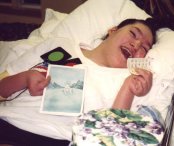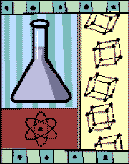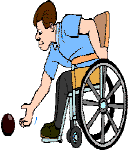The Cerebral Palsy Network
- Spasticity Chart
- Team Approach
- Oral Medications
- ITB
- Rhizotomy
- Orthopedic Surgery
- Brain Injuries
- Casts & Braces
- Physical Therapy
- Glossary Terms
- Credits
- Botox
Around CPN
Resource
Center
Glossary of Selected Terms
ADL(activity of daily living): usually used in the plural form to refer to selfcare activities such as washing, bathing, dressing, using the toilet.
AFO(ankle-foot orthosis): a brace used to stretch the Achilles tendon. Commonly made of a thin, light plastic material that is individually molded for a child. As a child grows, a new AFO may be needed.
Ambulatory: able to walk.
Athetosis: involuntary (uncontrollable) writhing movements of face, arms and hands. Athetosis is present in some individuals with cerebral palsy.
Baclofen: muscle relaxant used to treat spasticity. Can be administered as an oral dose or intrathecally, via pump. (Lioresal®)
Botulinum toxin: a drug, administered via intramuscular injection, to treat spasticity. (Botox®)
Central Nervous System (CNS): the brain and the spinal cord. The CNS receives sensory impulses from the rest of the nervous system and then controls the body's response to those impulses.
Chorea: uncontrollable, small, jerky types of movements of toes and fingers. Chorea is present in some individuals with cerebral palsy.
Cognitive functions: the skills of the brain. For example, memory, attention and concentration are cognitive functions.
Contractures: permanent muscle and tendon shortening, a result of spastic tightening of muscles for long periods of time.
Diffuse spasticity: term used when spasticity is in several different muscles in the arms and the legs.
Dystonia: involuntary slow, sustained muscle contractions which result in abnormal postures and twisting motions of arm(s), leg(s), trunk.
Function: a clinical term that usually refers to an ability (or abilities) or skill needed to carry out an activity of daily living(ADL) such as sitting, walking, eating, dressing, writing, washing or using the toilet.
Hip dislocation: the hip is a joint where the upper end of the thigh bone (femur) meets the pelvic bone. In children with spasticity, the end of the femur can gradually be pulled out of its socket where it connects with the hip. This condition is treated surgically.
Orthotics: the filed of knowledge relations to orthopedic apparatus (orthoses) used to support, align, prevent or correct deformities or to improve function of movable parts of the body.
Range of motion (ROM) refers to the flexibility of joins such as elbows, wrists, ankles, knees, hips. Spastic muscles make joints stiff; this decreases the range of motion (span of movement possible) of the joint.
Serial casting: using a cast to stretch tightened muscle(s) and then reacting as the muscle stretches. The goal is to increase the range of motion.
Spasticity: a velocity-dependent increase in muscle resistance to passive movement accompanied by increase stretch reflexes and clonus (intermittent muscular contractions). Spasticity is due to uninhibited activity in spinal circuits and is not the same thing as hypertonicity (excessive tone in muscular structure).
Tendon: a fibrous band of tissue that connects muscle to bone.
Tolerance: in reference to Medication, refers to the body becoming less responsive to a particular dosage of medication. Accordingly, to maintain the effect of medication, dosage needs to be increased.
Tone: As applied to the body's muscles, tone refers to natural tension; i.e., the muscle's ability to resist passive elongation or stretch. Tone is the normal state of balanced tension and responsiveness of the body.
This site designed & maintained by Mystic Dawn Web Creations. The Cerebral Palsy Network©1997/2003. All graphics are the exclusive property of CPN, unless otherwise indicated. Contact CPN at Cerebral Palsy Network for further information.
Last updated 03/24/03

Amanda the reason CPN was
started
CPN
Reunion 2003

CP
Research
What's happening Today with
Cerebral Palsy

Special
Olympics
What's happening with
Special Olympics in 2003

CP
& Education
What's happening with
Special Need and Education in 2003